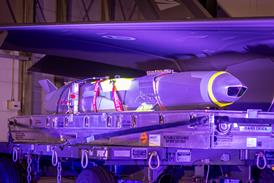NATS demonstrates support system that can check for potential conflicts and will speed up decision-making
UK air navigation service provider NATS has demonstrated a new controller tool it has billed as "the biggest change in air traffic control since radar". Dubbed iFACTS (interim future area control tools support), the system will enable controllers to check for potential conflicts up to 18min ahead when it goes operational at the NATS Swanwick area control centre (ACC) in the 2008-9 low season.
NATS chief executive Paul Barron says: "As well as giving us the tools to increase capacity at the rate our customers need, iFACTS also alerts controllers early to flights that are not following their flight plan and detects medium-term conflicts, which will also enhance our safety capability."
Swanwick ACC general manager Paul Reid says the system will improve the speed and effectiveness of controller decision-making, enabling controllers to handle higher traffic flow rates safely. This will help NATS to meet growing demand without the need for airspace redesign.
Reid says that in busy areas, re-sectorisation has reached a point where it becomes counter-productive as the number of sectors increases and the handovers between them multiply. NATS had to develop a tool that would cope with growth in another way.
iFACTS' look-ahead capability enables controllers "to test the viability of various options available to them for manoeuvring aircraft, as well as more time to make decisions", says NATS.
Developed by NATS with systems engineering and software specialist Praxis, the system uses algorithms that project the flight plan trajectory of every aircraft ahead by up to 18min, and this updates each time an aircraft is re-cleared. It does not use a two-way datalink with aircraft flight management systems, says Reid, adding that such an iFACTS development is much further into the future.
Praxis managing director Keith Williams says that, at present, the system is "85% of the way to being operational", and controllers at Swanwick are already working with it in the ACC's development department so NATS and Praxis can get feedback on ease of operation and ideas for optimising the man-machine interface.
Source: Flight International


























